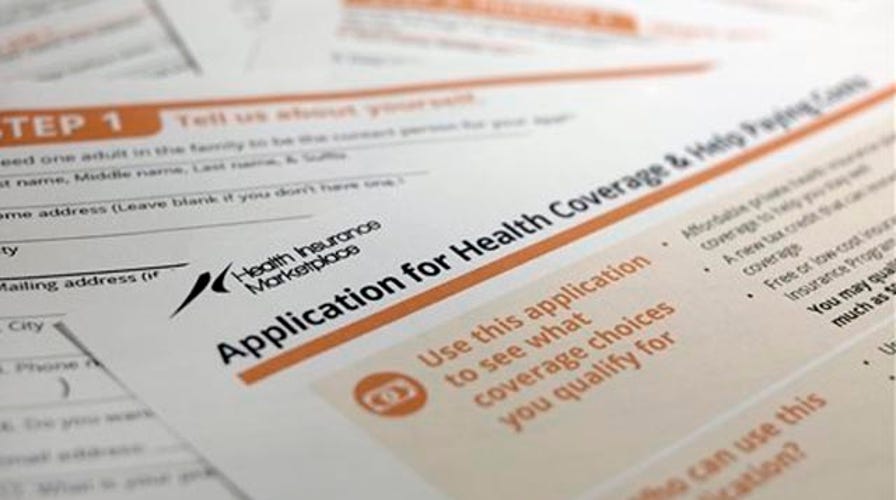How is ObamaCare impacting the insurance industry?
Juan Williams, David Limbaugh on the state of health care in America
Don’t you wish we could roll back the clock to the time when ObamaCare was on the table four years ago and start the discussion about health reform all over again?
I know I do. And among doctors, I am far from alone in feeling this way.
In fact a new poll by the New York State Medical Society found that a full 44 percent of physicians say they aren’t participating in ObamaCare and 23 percent say they aren’t taking those few patients who manage to get their insurance from the state exchanges (I must confess I haven’t yet seen one of these patients yet).
[pullquote]
Whether that number of doctors will actually be able to actually walk away from ObamaCare is unknown, but one thing’s for sure, it is a pretty good gauge of doctor discontent.
The question that the media is ignoring is, how can you keep your doctor, as the president repeatedly promised, if your doctor is not keeping you?
The new ObamaCare policies on the state exchange utilize narrow networks. These networks may not include your doctor or the specialists he or she refers patients to or the hospitals they admit patients to.
Your doctor may also choose not to participate in one of these plans if they don’t pay enough.
This is reminiscent of the HMOs of the 1990s, which restricted their networks to try to keep costs down but doctors found them unworkable.
I’m almost embarrassed to admit to you that as a physician, I am being forced to examine your insurance just as much as your insurance company is.
They need to know if it complies with the ObamaCare requirements and pre-requisites, I need to ask is your new insurance policy, which restricts the tests and treatments I can order and pays me too little to see you, still one I can still work with?
In many cases the answer is a resounding no.
Here’s another concern. As your premiums rise to cover the ObamaCare regulatory mandates do not expect these premiums to pay for the care you are used to receiving.
One of the major insurance companies is no longer paying me to give flu shots and only pays $5 for an EKG. How many doctors can still work with this reality?
Most doctors knew from the beginning that many patients wouldn’t be able to stick with us and that we wouldn’t be able to stick with you. We also knew that many of you wouldn’t get to keep your insurance plan. And if we knew all of this, I guarantee you that President Obama knew it, too.
In fact I reported on TV and in print as early as June 2010, when the first draft regulations of the new law came out, an 83 page document co-authored by HHS, IRS, and the Department of Labor, that most of the policies on both the employer-based and the individual market wouldn’t be grandfathered in under ObamaCare.
The draft's own estimates predicted that 66% of the insurance plans offered by small employers and 45% offered by large employers as well as from 40 to 67% of individual policies would no longer be legal by 2013. That’s close to 100 million people switching policies without knowing where their actual health care will come from.
What should have happened?
Doctors have always known that health insurance is the problem with the health care system, rather than the solution.
It creates an artificial interface between doctor and patient where neither is fully aware of the variable costs or the necessity of care. Instead, doctor and patient are both forced to spend most of their time dealing with the bureaucracy in the way of tests and treatments.
Most other industrialized countries utilize out-of-pocket expense as a disincentive for overuse, but in the U.S (where patients have less skin in the game) the focus is on providing coverage rather than addressing a real health care need.
If the federal government felt there was an underserved population that required health care, they should have provided the care directly, by hiring the doctors and nurses to treat them and building the clinics and hospitals to treat them in.
Expanding insurance to a one-size-fits-all standard without making sure the willing doctors and nurses were available was never the right answer, much as it isn’t the answer in Canada.Catastrophic insurance for all would have been sufficient to cover emergency treatments.
What to do now?
As the ObamaCare beast roars in pain, victim of its own unwieldiness, it is tempting to sit back and watch.
But that isn’t the American way.
Instead, now is the time to drive home the fundamental point that less is more, that comprehensive coverage doesn’t mean comprehensive care, that doctors concerns must be considered as much as our patients.
While the beast is weak and floundering, let’s strip away its skin; removing as many bullying mandates and choice-choking restrictions from it as possible.

